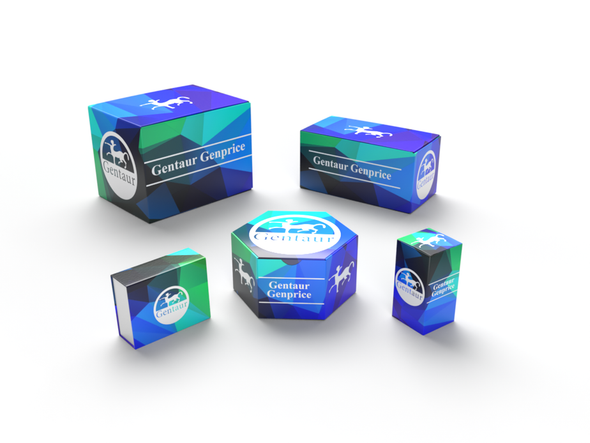Description
Rat Anti-Mouse EDAR (ectodysplasmin receptor) Antibody | 103-M219 | Gentaur UK, US & Europe Distribution
Species: Anti-Mouse
Host / biotech: Rat
Comment: N/A
Label: N/A
Clone / Antibody feature: (#8L53)
Subcategory: Monoclonal Antibody
Category: Antibody
Synonyms: Edar; dl; ED3; ED5; ED1R; EDA3; EDA-A1R
Isotype: IgG2
Application: WB
Detection Range: N/A
Species Reactivity/Cross reactivity: Mouse
Antigen: recombinant mouse EC-domain of EDAR
Description: EDAR is a type I transmembrane protein which is a member of the TNF Receptor Superfamily (TNFR-SF). The extracellular domain contains 14 cysteine residues, six of which approximate the TNFRSF cysteine-rich region, the cytoplasmic domain contains a region with homology to the death domains found in other TNFRSF members. Mouse EDAR is a 488 amino acid (aa) protein with a predicted 30 aa signal, a 159 aa extracellular domain, a 22 aa transmembrane domain, and a 277 aa cytoplasmic domain. The human and mouse EDAR homologs share 91% identity. Within the TNFRSF, EDAR shares the highest homologies with XEDAR and TNFRSF19/TROY. EDAA1 is the EDAR ligand. EDA and EDAR have been associated with hypohidrotic ectodermal dysplasia (HED). HED is characterized by abnormalities in hair, teeth and eccrine sweat gland morphogenesis. HED was initially found to associate with two gene loci, tabby and downless. Tabby was later identified as the gene for EDA and downless as the autosomal EDAR gene. EDA has two splice variants, EDAA1 and EDAA2 which differ by only two amino acids. Despite this minor difference, the EDA isoforms display strong receptor specificity. EDAA1 only binds to EDAR, whereas EDAA2 binds to XEDAR, an Xlinked TNFRSF member with high homology to EDAR. Mutations in EDA, EDAR and XEDAR have been associated with HED.
Purity Confirmation: N/A
Endotoxin: N/A
Formulation: lyophilized
Storage Handling Stability: Lyophilized samples are stable for 2 years from date of receipt when stored at -20°C. Reconstituted antibody can be aliquoted and stored frozen at < -20°C for at least six months without detectable loss of activity.
Reconstituation: Centrifuge vial prior to opening. Reconstitute the antibody with 500 µl sterile PBS and the final concentration is 200 µg/ml.
Molecular Weight: N/A
Lenght (aa): N/A
Protein Sequence: N/A
NCBI Gene ID: 13608










